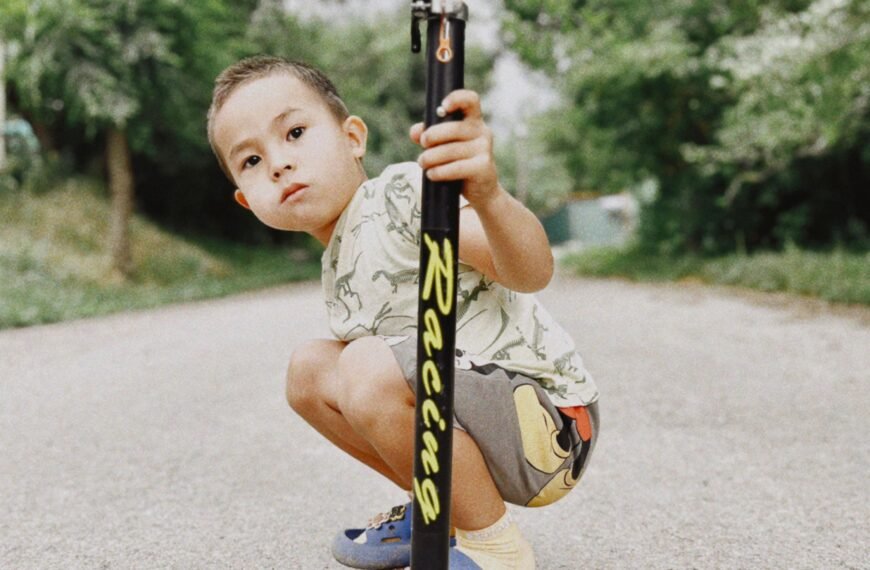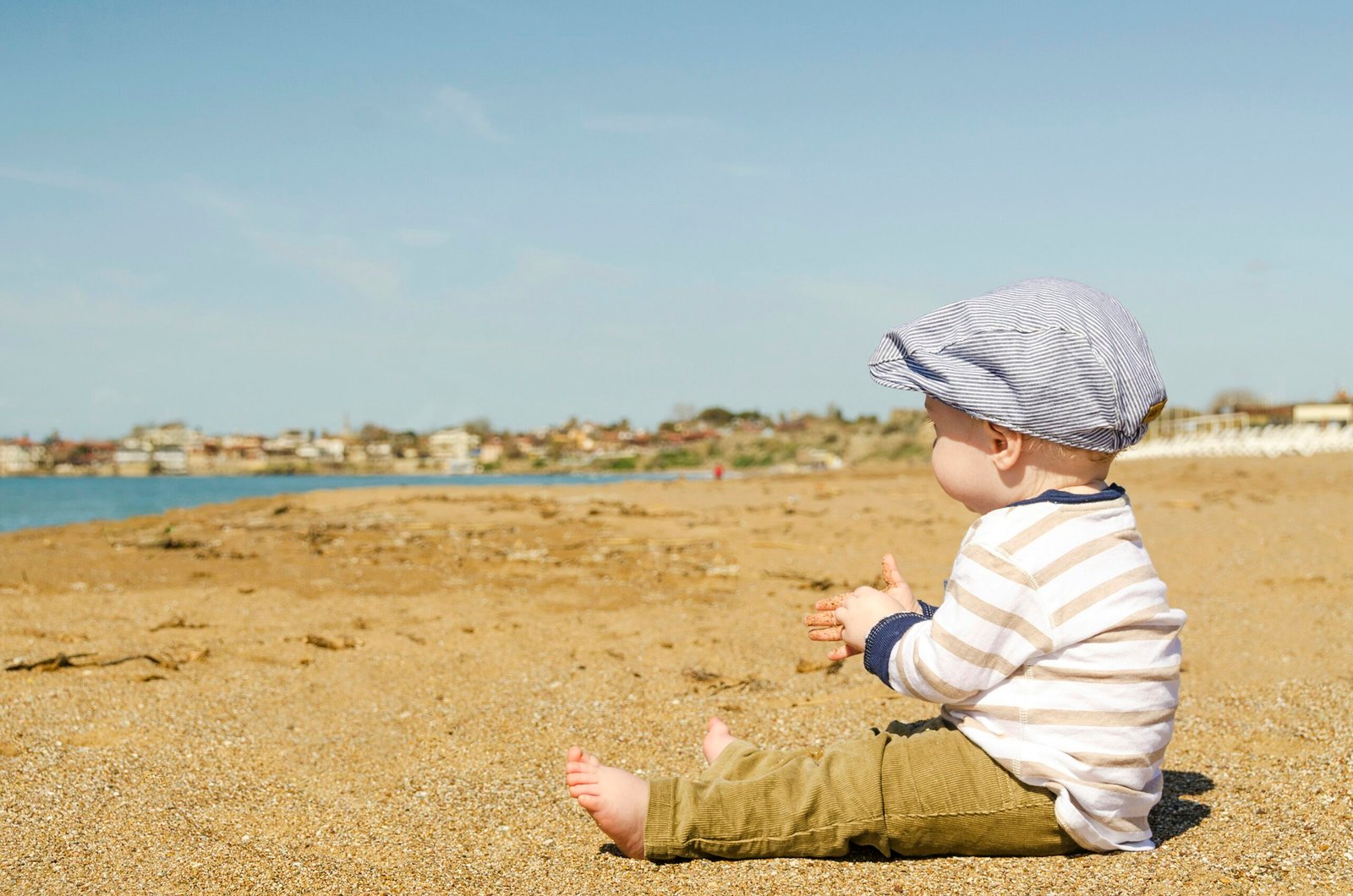As your little one grows and explores the world around them, you may find yourself wondering when they will start needing toys. It’s an exciting milestone that comes with a whole new level of discovery and development. From tactile toys to encourage sensory exploration, to educational toys that enhance cognitive skills, the right toys can play a crucial role in your baby’s early years. Let’s take a closer look at the different stages of development and when your baby will need toys to support their growth and learning.
Check Baby Toys Guide & Review
Developmental Milestones
Babies go through various developmental milestones as they grow, and providing them with appropriate toys can support their overall development. From sensory stimulation to hand-eye coordination and cognitive development, each milestone plays a crucial role in shaping a baby’s growth and learning abilities. Let’s explore these milestones and the toys that can aid in their achievement.
Sensory Stimulation
Sensory stimulation is an essential aspect of a baby’s early development. By engaging their senses, babies can explore and understand the world around them. Toys that provide sensory stimulation can help babies develop a better awareness of their surroundings.
Rattles
Rattles are classic toys that engage a baby’s sense of hearing and touch. The gentle sound produced by the rattling beads or bells within a rattle can captivate a baby’s attention and help enhance their auditory skills. Additionally, the act of grasping and shaking the rattle promotes hand-eye coordination and muscle control.
Teething Toys
Teething can be a challenging phase for babies and parents alike. Teething toys, specifically designed with different textures and shapes, can provide relief for sore gums while promoting sensory exploration. Babies can explore the various textures, chew on the toys, and enhance their fine motor skills in the process.
Soft Toys with Textures
Soft toys with different textures offer a tactile experience for babies. By touching and feeling the different fabrics and surfaces, babies can heighten their sense of touch and improve their sensory processing skills. These toys often come in various shapes and sizes, allowing babies to explore different textures and develop their fine motor abilities.
Hand-eye Coordination
Hand-eye coordination is the ability to use the eyes and hands together effectively. Developing this skill is vital for tasks such as grasping objects, reaching for toys, and eventually, writing and drawing. Toys that promote hand-eye coordination can aid in refining these skills.
Stacking Rings
Stacking rings are not only fun toys but also excellent tools for developing hand-eye coordination. By placing the rings on a central rod, babies learn to gauge distances, adjust their movements, and refine their fine motor skills. As they progress, they can experiment with different stacking orders, enhancing problem-solving abilities.
Shape Sorters
Shape sorters challenge babies to match specific shapes with corresponding holes. This activity helps babies refine their hand-eye coordination, as they need to manipulate and align shapes to successfully fit them into the correct openings. Shape sorters also introduce the concept of problem-solving and spatial awareness.
Busy Boards
Busy boards offer a variety of sensory experiences and activities, all in one toy. From buttons and switches to zippers and latches, babies can practice their hand-eye coordination while engaging in different fine motor tasks. These interactive boards encourage exploration, problem-solving, and the development of cognitive skills.
Cognitive Development
Cognitive development refers to a baby’s ability to think, reason, and problem-solve. As babies grow, they become more curious and eager to explore their environment. Toys that stimulate cognitive development can foster curiosity, imagination, and cognitive skills.
Puzzle Toys
Puzzle toys are excellent tools for promoting cognitive development in babies. By manipulating different pieces and figuring out how they fit together, babies can enhance their problem-solving abilities and spatial reasoning skills. Puzzle toys come in various levels of complexity, allowing babies to progress as they develop.
Building Blocks
Building blocks are versatile toys that aid in multiple areas of development. Babies can stack, sort, and arrange blocks in various ways, promoting spatial awareness and problem-solving. As they grow, babies can use blocks to build simple structures, fostering creativity and imagination.
Activity Centers
Activity centers provide a range of interactive features to engage babies’ minds and bodies. From buttons that produce sounds and lights to spinning gears and mirrors, these centers offer a multitude of stimulating activities. By exploring and interacting with each feature, babies can develop their cognitive skills, sensory perception, and attention span.
Exploratory Play
Exploratory play is a fundamental part of a baby’s early years. It involves using their senses and motor skills to engage with toys and the environment. This type of play allows babies to learn about cause and effect, problem-solving, and enhance their creativity. Let’s explore different categories of toys that support exploratory play.
Tactile Toys
Babies love exploring different textures through touch, and tactile toys provide an excellent opportunity for them to do so. These toys engage the sense of touch, allowing babies to discover and learn through tactile exploration.
Sensory Balls
Sensory balls come in various sizes, textures, and colors, providing babies with a sensory-rich experience. By gripping, squeezing, and rolling the balls, babies can enhance their fine motor skills and tactile perception. The different textures of the balls engage their sense of touch and encourage sensory exploration.
Play Mats
Play mats offer a safe and comfortable space for babies to explore and play. These mats often have different textures, patterns, and sensory features to stimulate babies’ senses. By lying, rolling, and crawling on the various surfaces, babies can develop their gross motor skills and tactile sensitivity.
Squeeze Toys
Squeeze toys are soft, squeezable toys that can provide a satisfying sensory experience. Babies can grasp and manipulate these toys, enhancing their fine motor skills and finger strength. The act of squeezing the toy also engages their sense of touch and offers a tactile feedback.
Visual Toys
Visual toys play a crucial role in stimulating babies’ visual perception and developing their focusing and tracking abilities. These toys capture their attention through vibrant colors, contrasting patterns, and visually pleasing elements.
Mobiles
Mobiles are visually stimulating toys that hang above a baby’s crib or play area. The gentle movements and contrasting colors of the hanging elements capture the baby’s attention and promote visual tracking. Mobiles often provide babies with a calming and soothing environment.
Flashcards
Flashcards with age-appropriate images and vibrant colors can introduce babies to different objects, animals, and shapes. By flipping through the cards and associating the images with their names, babies can enhance their visual discrimination skills and expand their vocabulary. Flashcards can also be used as a tool for interactive play with caregivers.
Board Books
Board books are sturdy books designed for babies to explore and engage with visually. These books often feature bright pictures, simple text, and various textures that babies can touch and feel. Board books encourage babies’ love for books, stimulate visual perception, and promote early language development.
Auditory Toys
Auditory toys engage babies’ sense of hearing and provide auditory stimulation. These toys can introduce different sounds, music, and rhythms, promoting auditory discrimination and enhancing babies’ listening skills.
Musical Instruments
Musical instruments specifically designed for babies, such as baby pianos and shakers, can introduce them to the world of music. By exploring different sounds and rhythms, babies can enhance their auditory perception and develop a sense of musicality. Musical instruments also encourage creativity and self-expression.
Sound Books
Sound books combine visuals and sound, allowing babies to associate specific sounds with corresponding images. By pressing buttons or lifting flaps, babies can trigger different sounds, songs, or noises. Sound books stimulate auditory processing, expand vocabulary, and encourage interactive play.
Sing-along Toys
Sing-along toys provide babies with an opportunity to join in with familiar tunes and nursery rhymes. These toys often feature buttons that play music or sing songs, allowing babies to engage with the music and develop a sense of rhythm. Singing along with the toys can enhance their language skills, memory, and social interaction.

Social Interaction
As babies grow, social interaction becomes increasingly important for their overall development. Toys that encourage social interaction can foster communication skills, emotional understanding, and promote bonding with caregivers and peers.
Interactive Toys
Interactive toys allow babies to engage in play with their caregivers or playmates. These toys often require turn-taking or sharing, promoting social skills and cooperation. Interactive toys can include games, puzzles, and toys that encourage joint play and interaction.
Pretend Play Toys
Pretend play toys provide a platform for babies to explore and imitate real-life situations. These toys, such as kitchen sets or toolkits, allow babies to engage in pretend play, fostering creativity, imagination, and communication skills. Pretend play toys encourage role-playing and can be a source of endless entertainment for babies.
Cooperative Games
Cooperative games promote teamwork, collaboration, and problem-solving skills in babies. These games involve working together towards a common goal, and provide opportunities for turn-taking, communication, and shared decision-making. Cooperative games can be board games, puzzle games, or even toys that require group participation.
Toys for Sensory Stimulation
Toys specifically designed for sensory stimulation can engage babies’ senses and promote their sensory exploration. These toys often offer a range of textures, colors, and sounds to captivate their attention and enhance their sensory experiences.
Rattles
Rattles are versatile toys that provide both auditory and tactile stimulation. Babies enjoy the sound produced by the rattling beads or bells inside the toy, while the act of grasping and shaking the rattle promotes their hand-eye coordination and muscle control.
Teething Toys
Teething toys play a vital role in soothing babies’ sore gums during the teething phase. These toys typically have different textures and shapes, providing relief and promoting sensory exploration. Babies can chew on the teething toys to alleviate discomfort and enhance their fine motor skills.
Soft Toys with Textures
Soft toys with various textures offer babies a tactile experience. By touching and feeling the different fabrics and surfaces, babies can heighten their sense of touch and improve their sensory processing skills. These toys often come in different shapes and sizes, allowing babies to explore a variety of textures and develop their fine motor abilities.

Toys for Hand-eye Coordination
Toys that focus on developing hand-eye coordination can support babies in honing their fine motor skills and improving their ability to coordinate their movements.
Stacking Rings
Stacking rings are excellent tools for developing hand-eye coordination in babies. By placing the rings on a central rod, babies learn to gauge distances, adjust their movements, and refine their fine motor skills. As they progress, babies can experiment with different stacking orders, enhancing their problem-solving abilities.
Shape Sorters
Shape sorters challenge babies to match specific shapes with corresponding holes. This activity requires them to manipulate and align shapes to successfully fit them into the correct openings, promoting hand-eye coordination and problem-solving. Shape sorters also introduce the concept of spatial awareness.
Busy Boards
Busy boards provide a range of interactive features that engage babies’ hands and eyes simultaneously. From buttons and switches to zippers and latches, these boards encourage exploration and fine motor skill development. The various activities on busy boards promote hand-eye coordination, problem-solving, and cognitive development.
Toys for Cognitive Development
Toys that support cognitive development can stimulate babies’ thinking, reasoning, and problem-solving abilities. These toys provide opportunities for exploration and allow babies to expand their cognitive skills.
Puzzle Toys
Puzzle toys offer an excellent avenue for developing cognitive skills in babies. By manipulating different pieces and figuring out how they fit together, babies enhance their problem-solving abilities and spatial reasoning skills. Puzzle toys come in various levels of complexity, enabling babies to progress as they develop.
Building Blocks
Building blocks are versatile toys that promote cognitive development through open-ended play. Babies can stack, sort, and arrange blocks in various ways, promoting spatial awareness, problem-solving, and creativity. As babies grow, building blocks can be used to construct more intricate structures, fostering imaginative play and cognitive growth.
Activity Centers
Activity centers provide babies with a range of interactive features to engage their minds and bodies. From buttons that produce sounds and lights to spinning gears and mirrors, these centers offer opportunities for exploration and cognitive development. By interacting with each different activity, babies can develop their cognitive skills, sensory perception, and attention span.

Tactile Toys
Tactile toys engage babies’ sense of touch, allowing them to explore different textures and develop their sensory processing skills.
Sensory Balls
Sensory balls come in various sizes, textures, and colors, providing babies with a sensory-rich experience. By gripping, squeezing, and rolling the balls, babies can enhance their fine motor skills and tactile perception. The different textures of the balls engage their sense of touch and encourage sensory exploration.
Play Mats
Play mats offer a safe and comfortable space for babies to explore and play. These mats often have different textures, patterns, and sensory features that stimulate babies’ sense of touch while also promoting gross motor skills. By lying, rolling, and crawling on the various surfaces, babies can develop their tactile sensitivity and motor coordination.
Squeeze Toys
Squeeze toys are soft and squeezable toys that offer a satisfying tactile experience for babies. Babies can grasp and manipulate these toys, enhancing their fine motor skills and finger strength. The act of squeezing the toy also engages their sense of touch and provides tactile feedback.
Visual Toys
Visual toys play a crucial role in stimulating babies’ visual perception and developing their focusing and tracking abilities.
Mobiles
Mobiles are visually stimulating toys that hang above a baby’s crib or play area. The gentle movements and contrasting colors of the hanging elements capture the baby’s attention and promote visual tracking. Mobiles often provide babies with a calming and soothing environment.
Flashcards
Flashcards with age-appropriate images and vibrant colors can introduce babies to different objects, animals, and shapes. By flipping through the cards and associating the images with their names, babies can enhance their visual discrimination skills and expand their vocabulary. Flashcards can also be used as a tool for interactive play with caregivers.
Board Books
Board books are sturdy books designed for babies to explore and engage with visually. These books often feature bright pictures, simple text, and various textures that babies can touch and feel. Board books encourage babies’ love for books, stimulate visual perception, and promote early language development.
Auditory Toys
Auditory toys engage babies’ sense of hearing and provide auditory stimulation to support the development of their listening skills.
Musical Instruments
Musical instruments specifically designed for babies, such as baby pianos and shakers, can introduce them to the world of music. By exploring different sounds and rhythms, babies can enhance their auditory perception and develop a sense of musicality. Musical instruments also encourage creativity and self-expression.
Sound Books
Sound books combine visuals and sound, allowing babies to associate specific sounds with corresponding images. By pressing buttons or lifting flaps, babies can trigger different sounds, songs, or noises. Sound books stimulate auditory processing, expand babies’ vocabulary, and encourage interactive play.
Sing-along Toys
Sing-along toys provide babies with an opportunity to join in with familiar tunes and nursery rhymes. These toys often feature buttons that play music or sing songs, allowing babies to engage with the music and develop a sense of rhythm. Singing along with the toys can enhance their language skills, memory, and social interaction.
Cooperative Games
Cooperative games promote teamwork, collaboration, and problem-solving skills in babies. These games involve working together towards a common goal, thereby fostering social interaction and cooperation.
Board Games
Board games designed for babies promote cooperative play and strategic thinking. These games often revolve around matching, sorting, or problem-solving, encouraging babies to work together to achieve a collective objective. Board games offer opportunities for turn-taking, communication, and shared decision-making.
Puzzle Games
Puzzle games provide babies with opportunities to collaborate and problem-solve together. These games typically involve assembling a puzzle or finding hidden objects by working together as a team. Puzzle games can enhance babies’ critical thinking skills, spatial awareness, and communication abilities.
Team Sports Toys
Toys that simulate team sports, such as mini basketball or soccer sets, can introduce babies to the concept of teamwork and cooperation. Engaging in these activities can help babies develop gross motor skills, communication, and an understanding of rules and strategy. Team sports toys encourage social interaction and physical activity.
By understanding the milestones that babies go through and providing them with appropriate toys, we can actively support their development and create an enriching environment for their growth. From sensory stimulation to hand-eye coordination and cognitive development, the right toys can play a pivotal role in shaping a baby’s developmental journey. So, go ahead and choose toys that engage your little one’s senses, foster their social skills, and stimulate their growing minds. Happy playing!


















